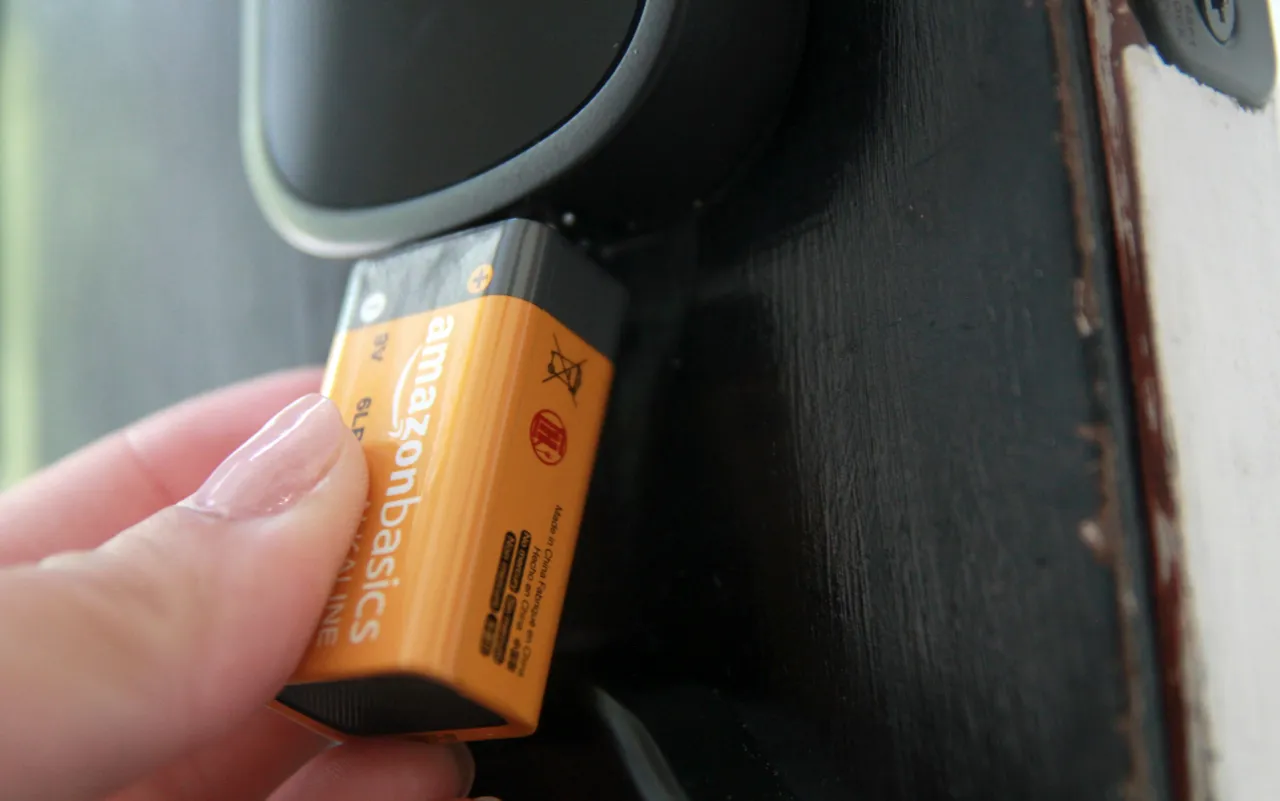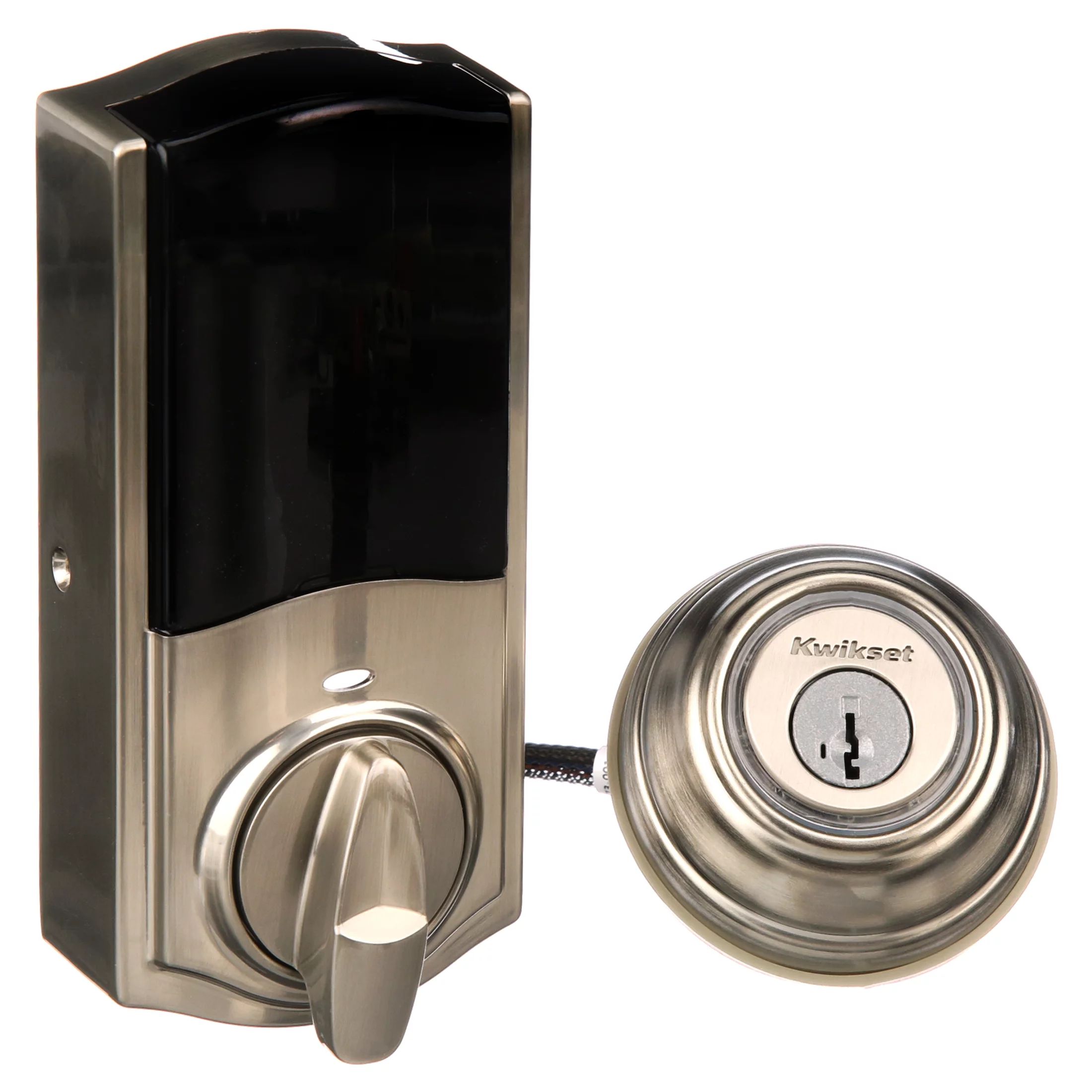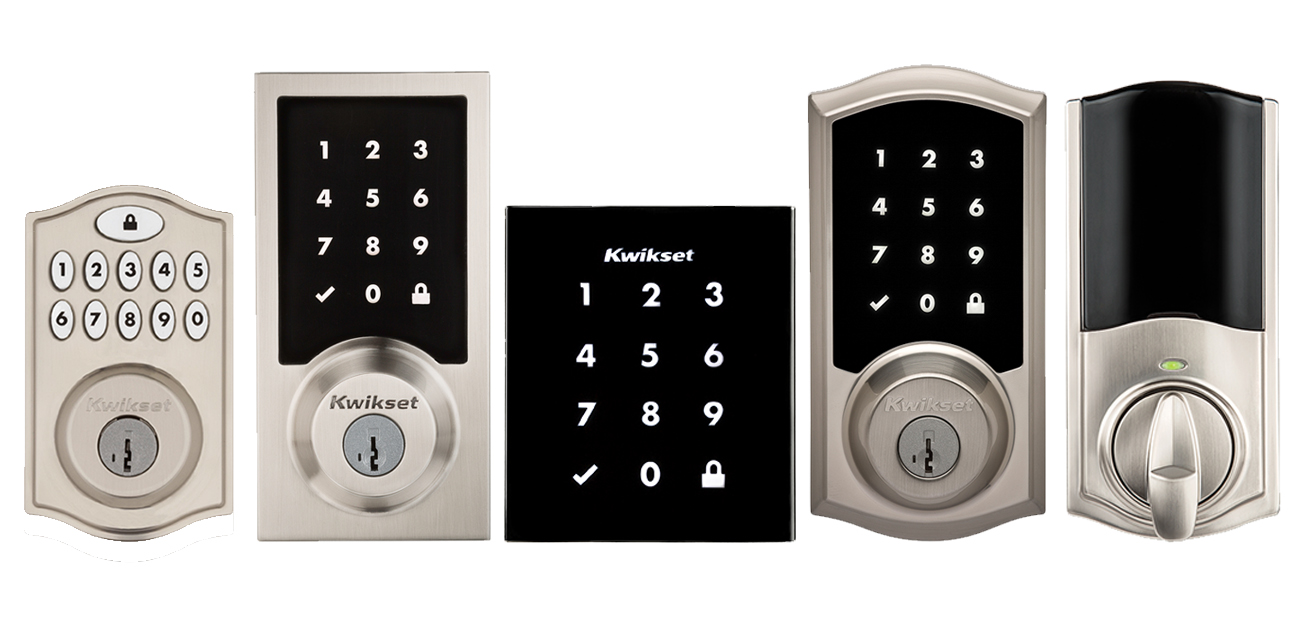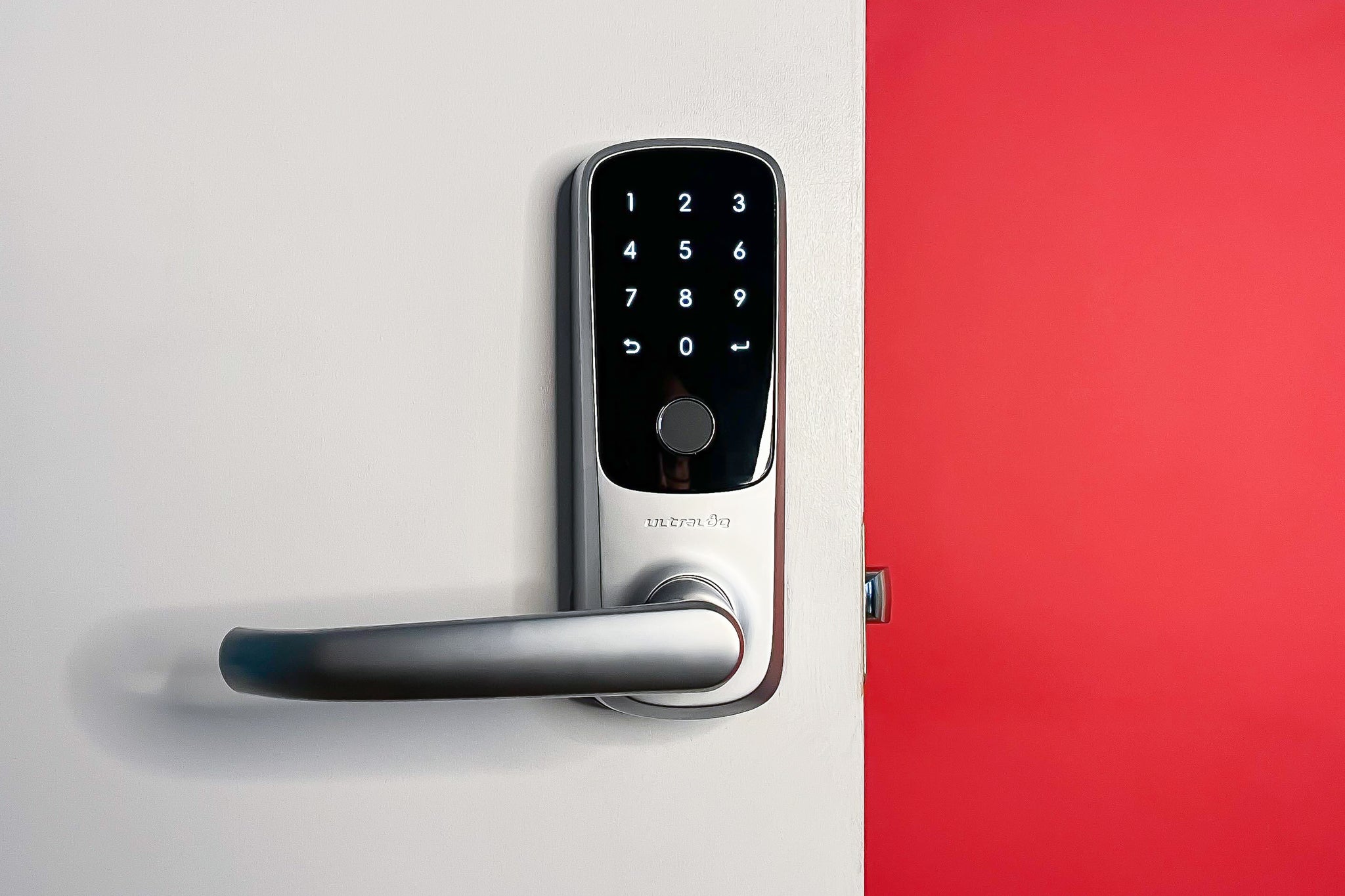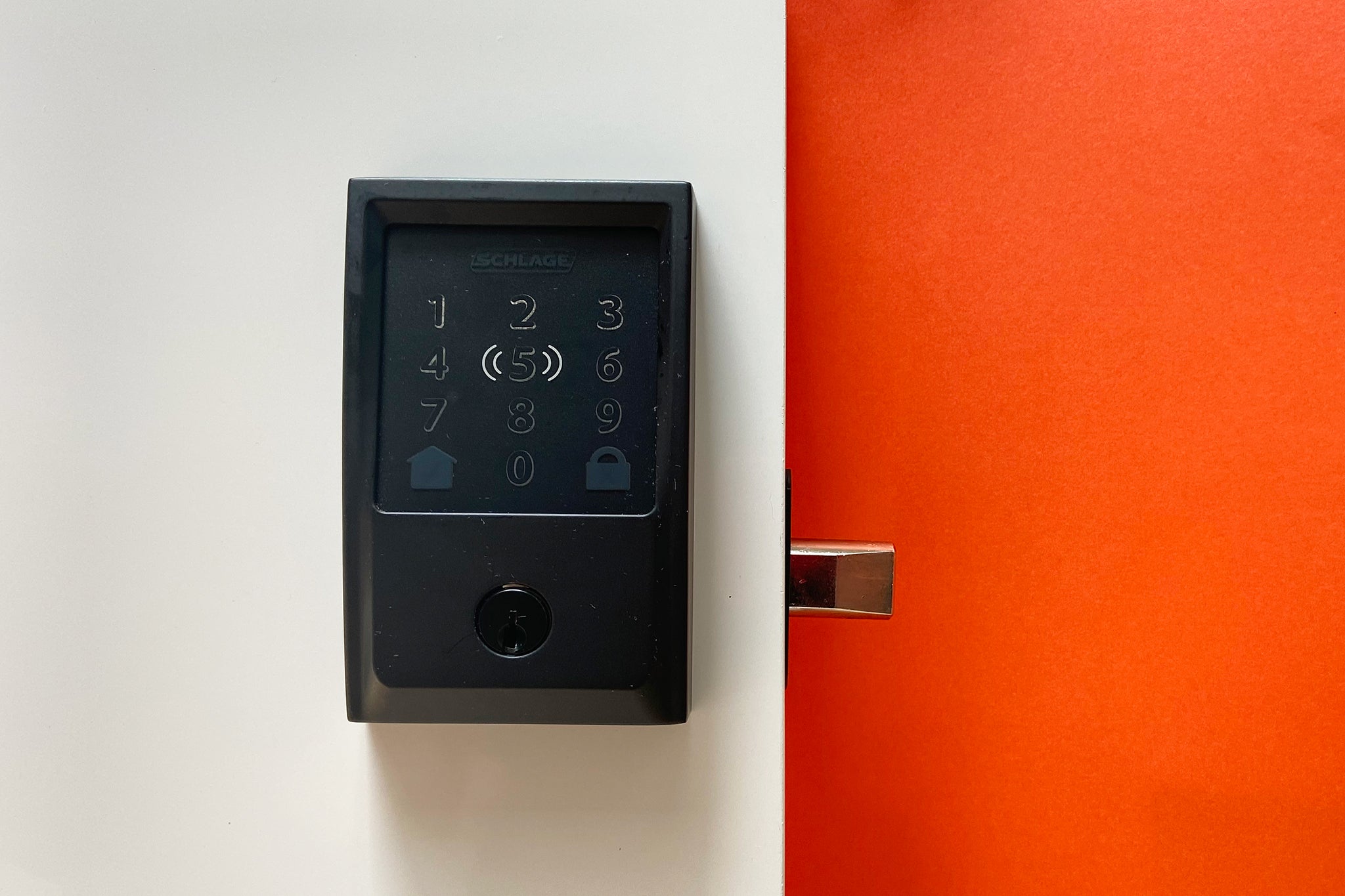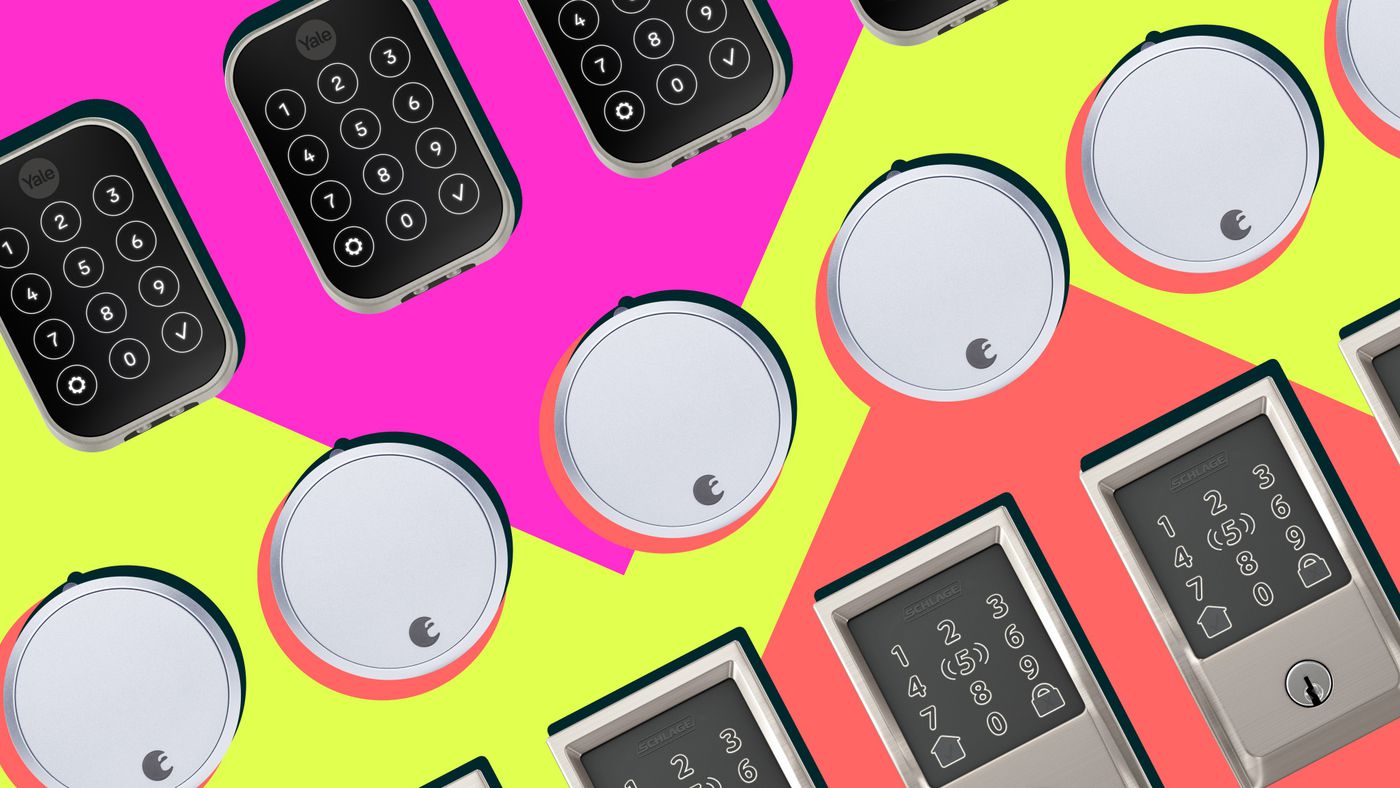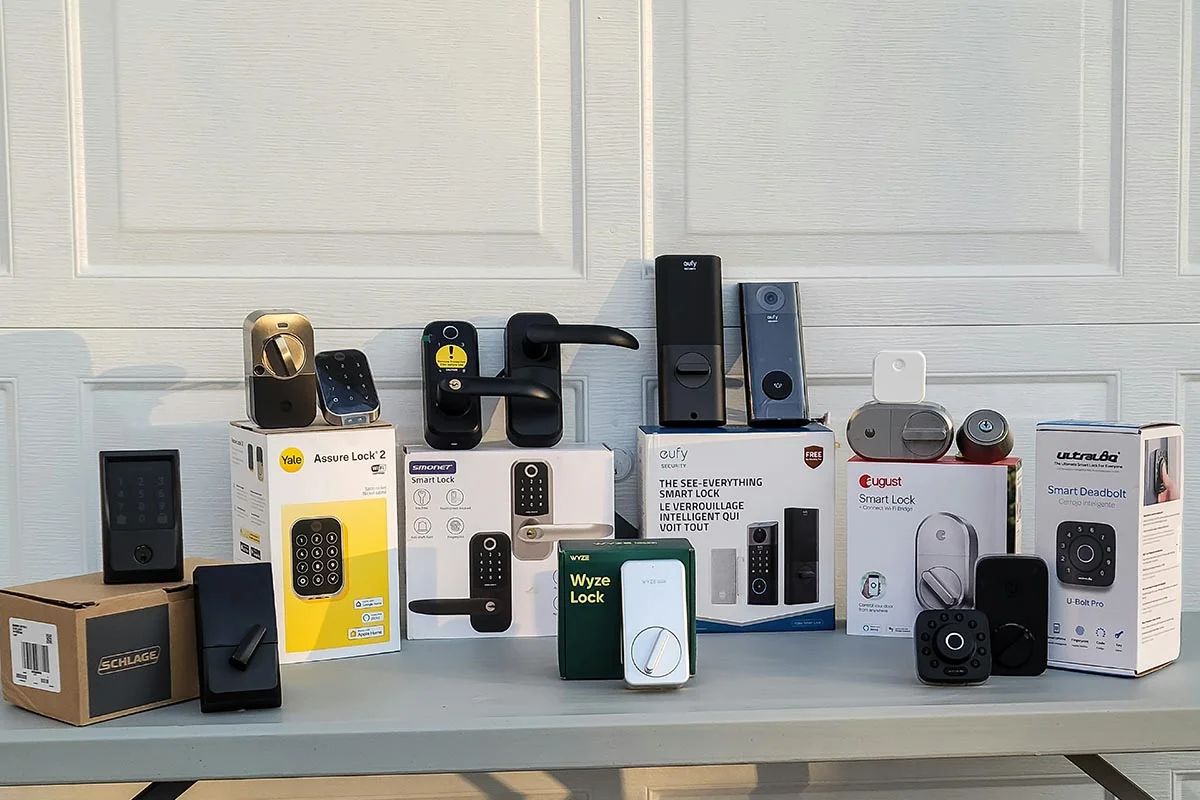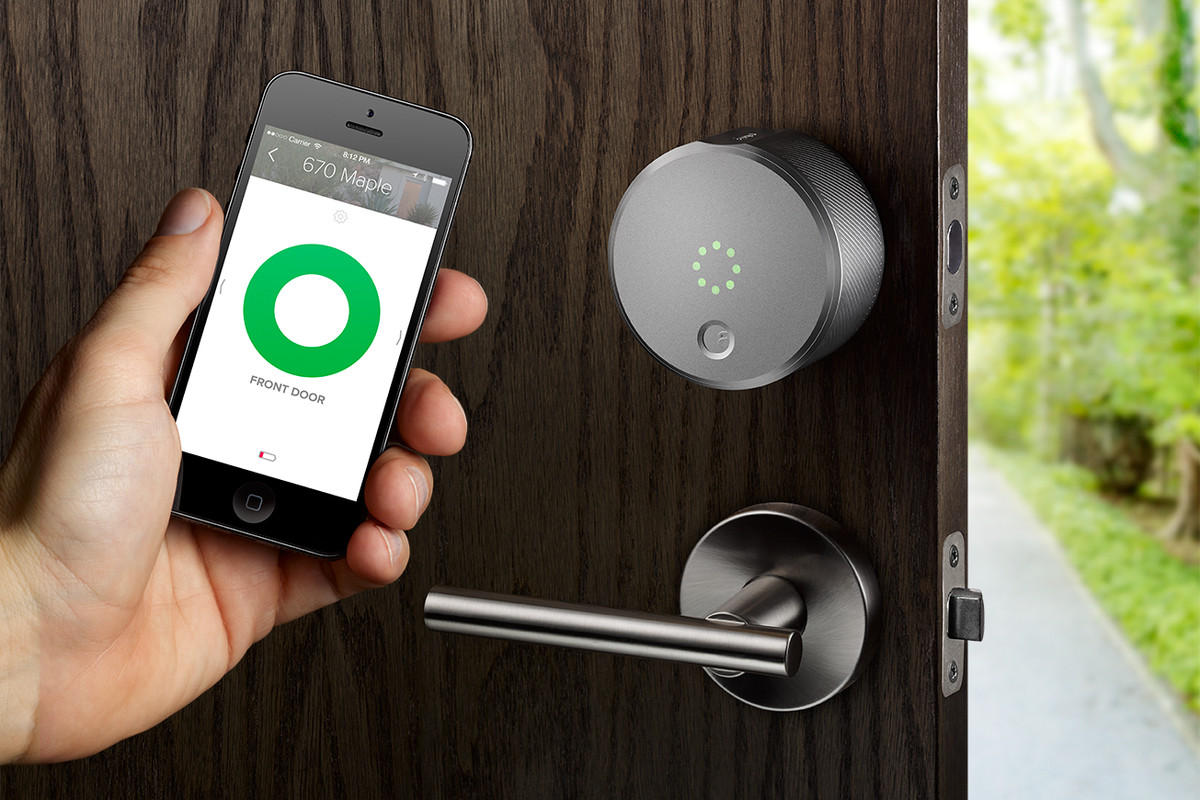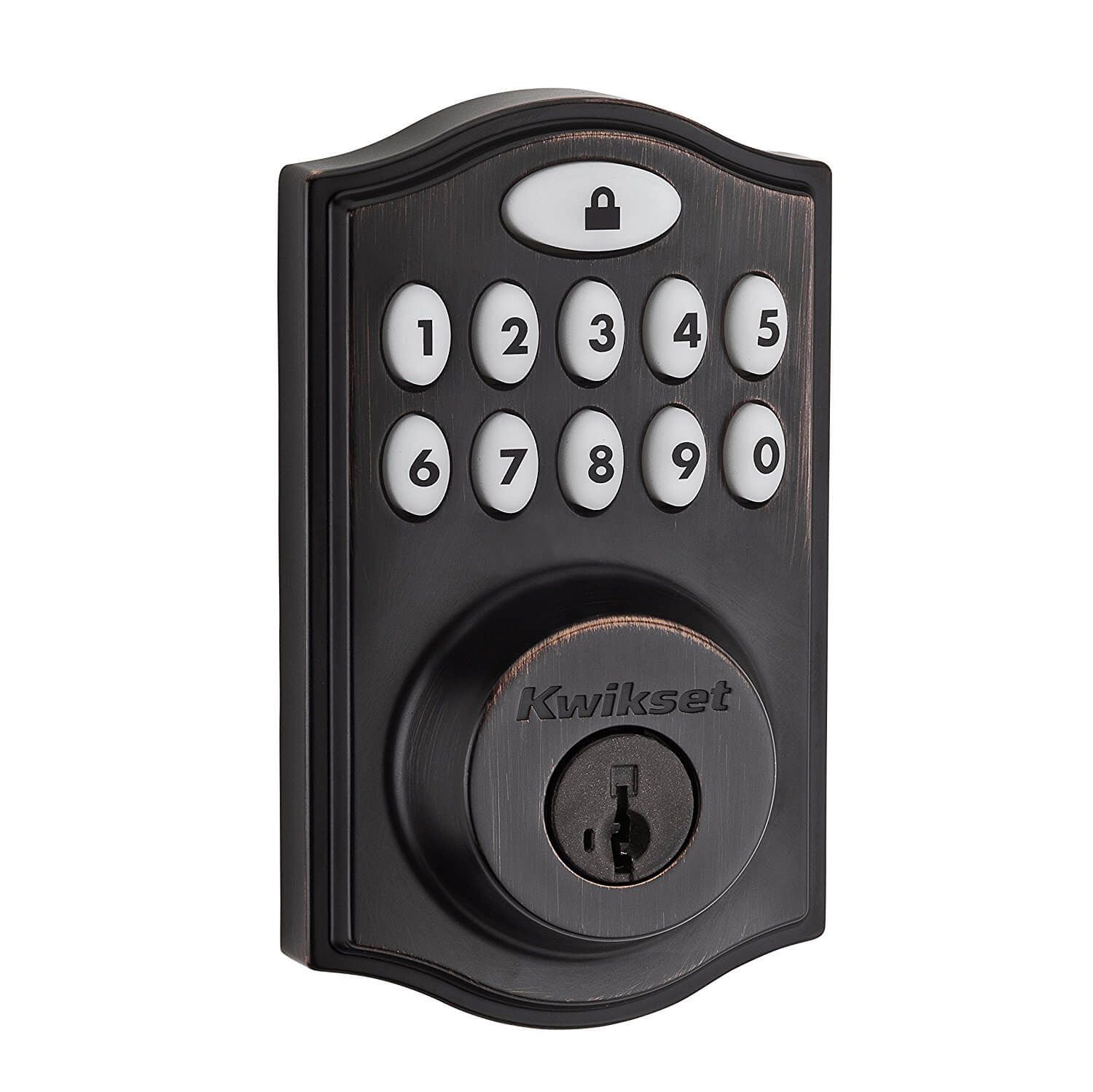Introduction
Smart lock technology has revolutionized the way we secure our homes and properties. With convenient features like keyless entry and remote access, these devices offer ease and convenience for homeowners. However, one common concern that arises with smart locks is the lifespan of their batteries. What happens if the smart lock battery dies?
In this article, we will delve into the world of smart lock batteries and explore what happens when they run out of juice. We will also provide some preventive measures to avoid a dead battery situation and guide you on how to replace the battery when needed.
Understanding the functioning of smart lock batteries is essential to grasp their importance and potential impact on your home security. Most smart locks are powered by batteries, typically in the form of AA or AAA alkaline batteries. These batteries provide the necessary electrical power for the lock to function and perform its various tasks.
It is crucial to be aware of the signs that indicate a low battery in your smart lock. These signs may vary depending on the specific lock model, but common indicators include slow responsiveness, error messages, or the lock failing to operate as intended. By noticing these signs early on, you can take proactive measures to avoid a complete battery failure situation in the future.
When your smart lock battery runs out completely, you may face certain consequences. The most obvious impact is the inability to unlock or lock your door using the digital interface or app. This can be particularly problematic if you are away from home and unable to physically access your property.
In order to prevent a dead battery situation, it is essential to adopt some preventive measures. One effective measure is to keep track of the battery life regularly. Most smart locks have battery level indicators that can be checked through the accompanying app or on the lock itself. By monitoring the battery status, you can plan ahead and replace the batteries before they die completely.
Understanding Smart Lock Batteries
Smart lock batteries are the life force behind the seamless operation of these innovative security devices. Unlike traditional locks that depend on physical keys, smart locks utilize electronic components and require a power source to function. This is where batteries come into play.
Most smart locks are designed to be powered by standard alkaline batteries, such as AA or AAA batteries. These types of batteries are readily available and easily replaceable, making them a popular choice for smart lock manufacturers. The specific battery requirement may vary depending on the lock model, so it is essential to refer to the manufacturer’s instructions to ensure compatibility.
One key advantage of smart lock batteries is their longevity. Due to the low power consumption of smart locks, their batteries can typically last for several months or even up to a year, depending on usage. This means you won’t have to frequently replace the batteries and can enjoy the ease and convenience of the smart lock feature.
Additionally, smart locks often come with battery level indicators that allow you to keep track of the battery life. These indicators can be accessed through the accompanying mobile app or by checking the lock itself. This feature provides valuable information on battery status, enabling you to plan ahead and replace the batteries in a timely manner.
When it comes to battery replacement, most smart locks have user-friendly designs that make the process quick and straightforward. Some locks have battery compartments located on the exterior panel, while others may require partial disassembly to access the battery compartment. In any case, the manufacturer’s instructions should be followed to ensure proper installation and avoid any damage to the lock.
It is worth mentioning that some smart locks offer alternative power sources, such as emergency backup batteries or the ability to connect to a power source via a USB cable. These options can be particularly useful during critical situations or when you want to ensure uninterrupted operation of the lock.
By understanding the importance of smart lock batteries and how they function, you can make informed decisions regarding battery maintenance and replacement. Keeping track of battery life and monitoring battery level indicators will help you avoid unexpected lockouts and maximize the benefits of your smart lock.
Signs of a Low Battery
Recognizing the signs of a low battery in your smart lock is crucial for maintaining the smooth operation of your device. By being aware of these signs, you can take proactive measures to replace the batteries and avoid potential lockouts. Here are some common indicators that your smart lock battery is running low:
- Slow responsiveness: If you notice that your smart lock takes longer than usual to respond to your commands, such as locking or unlocking, it could indicate a low battery. This delay in response can be a result of insufficient power supply, and it serves as a warning sign to replace the batteries soon.
- Error messages: Some smart locks are equipped with a built-in mechanism to alert you when the battery is running low. This can be in the form of error messages displayed on the lock’s digital interface or through notifications on the accompanying mobile app. If you receive such messages, it is crucial to take immediate action and replace the batteries.
- Dim or flashing lights: Many smart locks feature LED lights or indicators that provide visual feedback. When the battery is running low, you may observe a dimming of the lights or irregular flashing patterns. These visual cues serve as a reminder to check the battery status and ensure timely replacement.
- Inconsistent locking/unlocking: A low battery can cause your smart lock to operate inconsistently or fail to lock/unlock as intended. You may encounter situations where the lock partially engages or fails to respond altogether. Should you experience these irregularities, it is advisable to check the battery level and replace the batteries if necessary.
- Audible low battery warning: Some smart locks emit an audible warning, such as a beep or a chime, when the battery is running low. This auditory signal is a helpful prompt to take action and replace the batteries promptly.
It is important not to ignore these signs, as a completely drained battery can leave you locked out of your own property. By paying attention to the warning signs of a low battery, you can ensure the continuous functionality of your smart lock and maintain the security and convenience it provides.
What Happens when the Smart Lock Battery Dies
When the battery of a smart lock dies, it can have several implications and may temporarily disrupt the convenience and functionality that the lock provides. Here are some of the common consequences of a dead smart lock battery:
- Inability to lock or unlock: The most obvious impact of a dead battery is the inability to lock or unlock your door using the digital interface or app. This can be particularly troublesome if you are away from home and unable to physically access your property.
- Loss of remote access: Many smart locks offer remote access features, allowing you to lock or unlock your door using a smartphone app. When the battery dies, you lose this remote access capability until the batteries are replaced.
- No access for authorized users: If you have granted access to other individuals, such as family members or friends, they may also lose the ability to unlock the door if the batteries are dead. This can be inconvenient and may require alternative arrangements to ensure access to the property.
- Disruption of scheduled functions: Certain smart locks allow for scheduled locking or unlocking based on specific times, such as during weekdays or when you are away. A dead battery can interrupt these scheduled functions, potentially leaving your home unsecured or requiring manual intervention to secure the door.
- Temporary reliance on physical key: Smart locks often have a backup option of using a physical key. When the battery dies, you may need to resort to using the traditional key to gain access to your property until the batteries are replaced.
To avoid the consequences of a dead smart lock battery, it is advisable to be proactive in monitoring battery levels and replacing the batteries before they completely die. Regularly checking the battery status through the lock’s digital interface or app will help you stay informed and prevent any unexpected lockouts.
It’s important to note that while a dead smart lock battery can be an inconvenience, it does not compromise the security of your property. Smart locks are designed with fallback options, such as physical keys or emergency backup power, to ensure that you can always access your home, even in the event of a dead battery.
By understanding the impact of a dead smart lock battery, you can take the necessary precautions to prevent such situations and maintain a seamless and secure home entrance experience.
Preventive Measures to Avoid a Dead Battery
While a dead battery in a smart lock can be inconvenient, there are several preventive measures you can take to avoid this situation and ensure uninterrupted access to your property. Here are some effective strategies to keep your smart lock battery from dying:
- Regularly check battery levels: Most smart locks come equipped with battery level indicators. Make it a habit to check the battery status through the lock’s digital interface or app regularly. This will allow you to monitor the battery life and replace the batteries before they run out completely.
- Set reminders: To ensure you don’t forget to check the battery levels, set reminders on your calendar or phone. Choose a frequency that works for you, such as once a month or every couple of months, and make it a routine to check and replace batteries as needed.
- Use high-quality batteries: Invest in high-quality alkaline batteries for your smart lock. While they may be slightly more expensive, they tend to last longer and provide consistent power supply. Cheap or generic batteries may drain quickly, requiring more frequent replacements.
- Keep spare batteries on hand: It’s a good idea to have a set of spare batteries specifically designated for your smart lock. This way, you’ll always have replacements readily available when the battery level indicator shows a low charge.
- Consider battery backup options: Some smart locks offer additional features to ensure uninterrupted operation even if the batteries die. These include emergency backup batteries or the ability to connect the lock to a power source via a USB cable. Explore these options when choosing a smart lock to provide added peace of mind.
- Maintain battery health: Make sure the battery contacts within the smart lock are clean and free from dust or corrosion. Wipe them gently with a clean cloth or cotton swab if necessary. This will help maintain good conductivity and optimize the battery life.
By implementing these preventive measures, you can significantly reduce the risk of a dead smart lock battery. Consistent monitoring, using high-quality batteries, and having spares on hand will ensure that your smart lock remains operational and you can enjoy the convenience and security it provides without any interruptions.
How to Replace a Smart Lock Battery
Replacing a smart lock battery is a straightforward process that can be done with minimal effort. Here’s a step-by-step guide on how to replace the battery in your smart lock:
- Identify the battery type: Before replacing the battery, verify the specific battery type required for your smart lock. Most smart locks use standard alkaline batteries, such as AA or AAA batteries. Refer to the manufacturer’s instructions or the label on the lock to ensure compatibility.
- Locate the battery compartment: Depending on the smart lock model, the battery compartment may be located on the exterior panel or require partial disassembly to access. Consult the manufacturer’s instructions for the precise location of the battery compartment.
- Prepare the new batteries: If you have spare batteries, ensure they are fresh and fully charged. Remove any plastic wrapping or protective covers from the new batteries before installing them.
- Remove the old batteries: Open the battery compartment using the designated method. Typically, this involves sliding or lifting a cover. Carefully remove the old batteries from the compartment, following the polarity markings (+/-) to ensure correct installation.
- Insert the new batteries: Insert the fresh batteries into the compartment, aligning the polarity markings with the designated slots. Ensure the batteries are firmly in place and correctly oriented.
- Close the battery compartment: Once the new batteries are securely in place, close the battery compartment cover or reassemble any parts that were removed. Ensure everything is properly sealed to prevent any water or dust from entering the lock.
- Test the lock: Test the functionality of the smart lock by trying to lock or unlock the door using the digital interface or app. Make sure the lock responds as expected, indicating successful battery replacement.
It’s recommended to consult the manufacturer’s instructions specific to your smart lock model for any additional steps or precautions to take during battery replacement. Following these guidelines will ensure a smooth and successful battery replacement process.
Remember to properly dispose of the old batteries according to local regulations. Consider recycling options or designated collection points for used batteries to minimize environmental impact.
By regularly checking the battery status and following these simple steps to replace the battery when needed, you can maintain the functionality and reliability of your smart lock for uninterrupted access and enhanced home security.
Conclusion
Smart lock batteries play a crucial role in powering these innovative security devices and ensuring seamless access to our homes and properties. By understanding the functioning of smart lock batteries and being aware of the signs of a low battery, you can take proactive measures to prevent unexpected lockouts and maintain the convenience they offer.
In the event that the smart lock battery dies, it’s important to know the implications and consequences. Temporary loss of remote access, inability to lock or unlock the door digitally, and reliance on physical keys are some of the challenges you may face. However, it’s essential to remember that smart locks are designed with backup options to ensure continued access to your property in such situations.
To avoid a dead battery, implement preventive measures such as regular battery checks, setting reminders, using high-quality batteries, and keeping spares on hand. Additionally, explore the battery backup options available in some smart locks to maintain uninterrupted operation even in the event of a battery failure.
When it’s time to replace the smart lock battery, follow the manufacturer’s instructions and the specific steps for your lock model. By taking the necessary precautions, you can easily replace the battery and restore the optimal functionality of your smart lock.
Overall, smart locks provide convenience, security, and peace of mind. With proper battery maintenance and timely replacements, you can enjoy the benefits of smart lock technology without any interruptions. Stay proactive, keep an eye on the battery status, and ensure that your smart lock remains powered and ready to secure your home.







